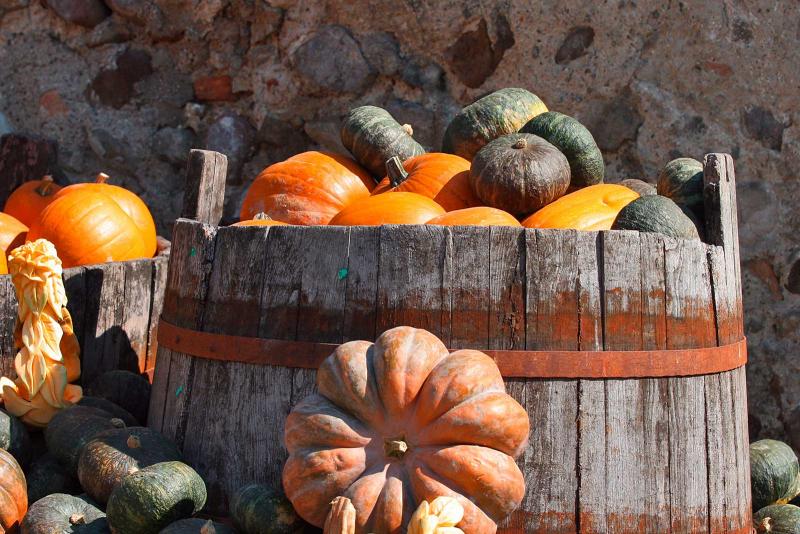A trip to the northern Italian region of Lombardy in the autumn season means a bountiful of local delicacies, starting with the Mantua pumpkin (zucca mantovana), widely used in the Mantua area as a base for many dishes, including the famous pumpkin tortelli. Recognized as a traditional product of Lombardy, the pumpkin grown here is especially large, with a firm, bright orange pulp, a thick green skin and a high sugar content.
During the autumn season, pumpkin takes the spotlight, as its versatility lends itself to both savory and sweet dishes; in addition, every part of the plant - pulp, flowers, leaves and seeds - can be eaten.
Every year, from September to December, the food festival Di Zucca in Zucca celebrates the local pumpkin and is the perfect chance to taste this delicacy directly from the producers.
A typical dish of Lombardy, synonymous with the area called Valtellina, and especially suitable for those humid, gloomy autumnal days, is pizzoccheri, a delicious first course whose base ingredient is buckwheat, a cereal used in Valtellina since the 14th century, cut in strips similar to tagliatelle, but shorter and stockier. If you have to pick a place to try pizzoccheri, head to Teglio, the hometown of this dish which also uses flour, butter, cheese and vegetables (comfort food at its best).
Another dish that pairs well with autumn is the local polenta e misultin, typical of Lake Como. The polenta must be well seared, while the fish comes from the regional lakes and must undergo a six-month process, during which it is eviscerated, salted right after it is cooked, and dried under the sun. The fish is then only dressed with parsley and garlic.
Another polenta-based dish which is good for the colder season is polenta e bruscitt, made with beef sautéed with butter and lard, then cooked on low heat for a couple of hours, and flavored at the end with red wine, usually Barbera, Nebbiolo or Barolo.
Rich cheeses are also perfect for the colder season: in Lombardy, you can choose among 60 different kinds, among them, robiola and taleggio, made in Valsassina; grana padano and mascarpone, made in Lodi; gorgonzola, which hails from the town of Gorgonzola near Milan, and is thought to have been made since at least the 15th century.
And of course autumn season means harvest time, and Lombardy boasts many great wines, beginning with the sparkling Franciacorta. Wine buffs should get on the Strada dei Vini e dei Sapori and stop at the local wineries to try the regional varieties. Valtellina has an outstanding red wine tradition: must-try are Sforzato, Sassella, Grumello and Inferno, which are obtained from terraced vineyards on the steep slopes of the Retian Alps. The Oltrepo’ Pavese, the hilly area in the province of Pavia south of the Po river, produces 36 varieties of wine, including the DOCG spumante Oltrepò Pavese metodo classico.






